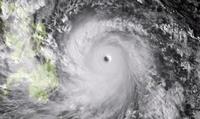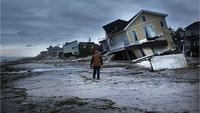-
Industry, Democrats reject GOP-sponsored TRIA-extension draft
House democrats and members of Property Casualty Insurers, a leading insurance trade group, have rejected a Republican-sponsored draft proposal which would alter some measures of the current Terrorism Risk Insurance Act (TRIA). The Property Casualty Insurers did not mince words, calling the GOP plan “unworkable for the marketplace.” The proposal would raise the amount of damage caused by a terrorist attack from the current $100 million to $500 million before government coverage is triggered (the higher threshold would apply to attacks which do not involve nuclear, biological, chemical, or radiological means).
-
-
Demand for terrorism insurance remains strong
The fourth editionof the Terrorism Risk Insurance Report has found that demand for terrorism insurance remains strong and the renewal of the Terrorism Risk Insurance Program Reauthorization Act (TRIA) plays a key role in making coverage available and affordable. A survey of roughly 2,600 organizations found that the demand and price for terrorism insurance has remained constant since 2009. Education organizations purchase property terrorism insurance at a higher rate, 81 percent, than companies in any other industry segment surveyed in 2013, followed by healthcare organizations, financial institutions, and media companies.
-
-
Boston bombing spurred small, midsize businesses to buy terrorism insurance
After the 2013 Boston Marathon bombing, terrorism insurance, designed for large businesses, became a necessary business expense for many midsize and small firms. Some 160 companies near the Boston explosion submitted insurance claims for property damage or business losses and only 14 percent had coverage for terrorism. “The Marathon attack changed the calculus,” an insurance industry insider says. “It taught us terrorism is a risk to businesses of every scale and size.”
-
-
Congress urged to renew the Terrorism Risk Insurance Act
The Terrorism Risk Insurance Act (TRIA) is set to expire at the end of 2014 and members of Congress are urging its reinstatement before it is too late. The bill was enacted in 2002 in response to 9/11, and requires private insurers to offer terrorism coverage to individuals, with government assistance should the total payout from an event exceeds $100 million.
-
-
Extending terrorism insurance would save U.S. government money after future attacks
In the wake of the terrorist attacks of September 11, 2001, terrorism risk insurance quickly became either unavailable or very expensive. Congress reacted by passing the Terrorism Risk Insurance Act, which provides an assurance of government support after a catastrophic attack. This has helped keep terrorism risk insurance affordable for businesses. The program will expire at the end of this year and Congress is considering the appropriate government role in terrorism insurance markets.
-
-
Global insured losses from catastrophes were $45 billion in 2013
Total economic losses from natural catastrophes and man-made disasters were $140 billion in 2013. Global insured losses were around $45 billion in 2013, with large contributions from flooding and hail events. The economic losses of $140 billion were down from $196 billion in 2012, and below the 10-year average of $190 billion. Around 26,000 lives were lost in natural catastrophes and man-made disasters in 2013.
-
-
Allowing Terrorism Risk Insurance Act to expire could hurt national security: Study
The current terrorism risk insurance program has a $27.5 billion threshold for aggregate losses that are paid by the insurance industry and commercial policyholders before the government program begins paying. The program will expire in 2014 and Congress again is considering the appropriate government role in terrorism insurance markets. Allowing the federal terrorism risk insurance act to expire could have negative consequences for U.S. national security, according to a new study from the RAND Corporation.
-
-
2013 natural catastrophes dominated by extreme weather in Europe, Supertyphoon Haiyan

Exceptionally high losses from weather-related catastrophes in Europe and Supertyphoon Haiyan dominated the overall picture of natural catastrophes in 2013. Floods and hailstorms caused double-digit billion-dollar losses in central Europe, and in the Philippines one of the strongest cyclones in history, Supertyphoon Haiyan, resulted in a human catastrophe with over 6,000 fatalities.
-
-
Effectively modeling and profitably insuring terrorism risk
The insurance industry continues to explore ways to insure against terrorism risk, finding it a challenge despite developing various methodologies to measuring the likelihood of a terrorist attack. Terrorism experts in the insurance industry insist that because terrorism risk can be modeled, it can be effectively priced, and they note that several insurance companies are effectively modeling and profitably insuring terrorism risk today.
-
-
Game theory helps corporate risk manage analyze terrorism risks
The challenges of modeling and analyzing terrorism risk are based on the reality that the adversary is one who can alter where and when to strike and has the capability to counter-attack. Before 9/11, the science of risk modeling and analysis for corporations was primarily based on data accumulated from Mother Nature, a less responsive actor. Risk models have become more precise, but this increased precision notwithstanding, terrorists are likely to act in unexpected ways. To anticipate those unexpected ways, risk managers are relying on game theory, with the assumption that exploring hypothetical situations will prepare risk managers for the unexpected.
-
-
Terrorism insurance should cover cyberterrorism: industry

The Terrorism Risk Insurance Act(TRIA) is a federal backstop designed to protect insurers in the event an act of terrorism results in losses above $100 million. Industry officials question whether cyber terrorism is covered by the program, which is administered by the Treasury Department. Industry insiders note that terrorism risks have evolved since TRIA was enacted and cyberterrorism is now a real threat. TRIA should thus not simply be reauthorized with a blanket stamp of approval; instead there should be a discussion about whether acts of cyberterrorism should be explicitly included in TRIA.
-
-
Aon calls on U.S. to extend expiring Terrorism Risk Insurance Act
Aon plc called on the U.S. government to extend the Terrorism Risk Insurance Act (TRIA), saying that TRIA remains the best solution for handling the terrorism insurance exposure in the United States. Aon says that if the program is allowed to expire, more than 85 percent of insurers will no longer continue to insure terrorism risk. Ultimately, in the unfortunate event of a large-scale attack, the U.S. government would face the full burden of the associated costs of said terrorism.
-
-
New device will quickly detect botulinum, ricin, other biothreat agents
Researchers are developing a medical instrument which will be able quickly to detect a suite of biothreat agents, including anthrax, ricin, botulinum, shiga, and SEB toxin. The device, once developed, approved by the Food and Drug Administration (FDA), and commercialized, would most likely be used in emergency rooms in the event of a bioterrorism incident.
-
-
Americans support preparation for extreme weather, coastal challenges: survey
The challenges posed by rising sea levels and increasingly severe storms will only intensify as more Americans build along the coasts. A just-released NOAA report predicts that already crowded U.S. coastlines will become home to an additional eleven million people by 2020. A Stanford survey finds that the majority of Americans support stronger coastal development codes. Among the most popular policy solutions: stronger building codes for new structures along the coast to minimize damage, and preventing new buildings from being built near the coast.
-
-
U.S. suffered $119 billion in disaster-related losses in 2012

Natural and man-made disasters contributed to $186 billion in economic losses around the world last year. The United States took the biggest hit with $119 billion in losses. Insurance claims for weather-related losses in 2012 totaled $77 billion dollars, the third most expensive losses on record. Nine of the top ten most expensive insured loss events which occurred last year happened in the United States.
-
- All
- Regional
- Water
- Biometrics
- Borders/Immig
- Business
- Cybersecurity
- Detection
- Disasters
- Government
- Infrastructure
- International
- Public health
- Public Safety
- Communication interoperabillity
- Emergency services
- Emergency medical services
- Fire
- First response
- IEDs
- Law Enforcement
- Law Enforcement Technology
- Military technology
- Nonlethal weapons
- Nuclear weapons
- Personal protection equipment
- Police
- Notification /alert systems
- Situational awareness
- Weapons systems
- Sci-Tech
- Sector Reports
- Surveillance
- Transportation
Advertising & Marketing: advertise@newswirepubs.com
Editorial: editor@newswirepubs.com
General: info@newswirepubs.com
2010-2011 © News Wire Publications, LLC News Wire Publications, LLC
220 Old Country Road | Suite 200 | Mineola | New York | 11501
Permissions and Policies
Editorial: editor@newswirepubs.com
General: info@newswirepubs.com
2010-2011 © News Wire Publications, LLC News Wire Publications, LLC
220 Old Country Road | Suite 200 | Mineola | New York | 11501
Permissions and Policies
